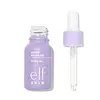What's inside
What's inside
 Key Ingredients
Key Ingredients

 Benefits
Benefits

 Concerns
Concerns

 Ingredients Side-by-side
Ingredients Side-by-side

Caprylic/Capric Triglyceride
MaskingPrunus Amygdalus Dulcis Oil
Skin ConditioningSimmondsia Chinensis Seed Oil
EmollientRicinus Communis Seed Oil
MaskingArgania Spinosa Kernel Oil
EmollientBrassica Oleracea Acephala Leaf Extract
HumectantRosmarinus Officinalis Leaf Extract
AntimicrobialTocopherol
AntioxidantRosa Damascena Flower Oil
MaskingVitis Vinifera Seed Oil
EmollientAleurites Moluccanus Seed Oil
Skin ConditioningTanacetum Annuum Flower Oil
MaskingAchillea Millefolium Oil
CleansingChamomilla Recutita Flower Oil
MaskingJasminum Grandiflorum Flower Extract
MaskingCaprylic/Capric Triglyceride, Prunus Amygdalus Dulcis Oil, Simmondsia Chinensis Seed Oil, Ricinus Communis Seed Oil, Argania Spinosa Kernel Oil, Brassica Oleracea Acephala Leaf Extract, Rosmarinus Officinalis Leaf Extract, Tocopherol, Rosa Damascena Flower Oil, Vitis Vinifera Seed Oil, Aleurites Moluccanus Seed Oil, Tanacetum Annuum Flower Oil, Achillea Millefolium Oil, Chamomilla Recutita Flower Oil, Jasminum Grandiflorum Flower Extract
Simmondsia Chinensis Seed Oil
EmollientCaprylic/Capric Triglyceride
MaskingHelianthus Annuus Seed Oil
EmollientLimnanthes Alba Seed Oil
Skin ConditioningRosa Rubiginosa Seed Oil
EmollientPersea Gratissima Oil
Skin ConditioningTocopherol
AntioxidantPrunus Amygdalus Dulcis Oil
Skin ConditioningPhenoxyethanol
PreservativeCaprylyl Glycol
EmollientSantalum Album Oil
MaskingLavandula Angustifolia Oil
MaskingSclerocarya Birrea Seed Oil
HumectantLinalool
PerfumingSimmondsia Chinensis Seed Oil, Caprylic/Capric Triglyceride, Helianthus Annuus Seed Oil, Limnanthes Alba Seed Oil, Rosa Rubiginosa Seed Oil, Persea Gratissima Oil, Tocopherol, Prunus Amygdalus Dulcis Oil, Phenoxyethanol, Caprylyl Glycol, Santalum Album Oil, Lavandula Angustifolia Oil, Sclerocarya Birrea Seed Oil, Linalool
Ingredients Explained
These ingredients are found in both products.
Ingredients higher up in an ingredient list are typically present in a larger amount.
This ingredient is an emollient, solvent, and texture enhancer. It is considered a skin-softener by helping the skin prevent moisture loss.
It helps thicken a product's formula and makes it easier to spread by dissolving clumping compounds.
Caprylic Triglyceride is made by combining glycerin with coconut oil, forming a clear liquid.
While there is an assumption Caprylic Triglyceride can clog pores due to it being derived from coconut oil, there is no research supporting this.
Learn more about Caprylic/Capric TriglyceridePrunus Amygdalus Dulcis Oil comes from the sweet almond, a tree native to Iran. This oil has no fragrance and is non-volatile.
Almonds contain healthy fats, vitamins, and minerals. It is a rich source of Vitamin E, a great antioxidant and skin conditioning ingredient. Sweet almond oil contains fatty acids such as linolenic acid and triglycerides.
The content of sweet almond oil makes it a great emollient; it can help soften and hydrate your skin. Emollients create a barrier over your skin to trap moisture in. Sweet almond oil has antioxidant properties.
Those with an almond allergy should be careful of this ingredient and speak with a professional about using it in your skincare.
This ingredient may not be fungal-acne safe.
Learn more about Prunus Amygdalus Dulcis OilThis oil comes from the seeds of the desert shrub called Jojoba. It is more commonly known as jojoba oil, a non-comedogenic oil.
Jojoba oil does not contain fragrance and has many fatty-acids, making it a great soothing ingredient.
It also contains Vitamin E, a great moisturizing ingredient. Vitamin E is also an antioxidant and protects your skin against oxidative damage.
This ingredient humectant properties, meaning it helps draw moisture from the air. This helps keep your skin hydrated.
While jojoba has antibacterial properties, it is only able to kill some strains of bacteria.
Studies also show it helps in wound healing. In fact, Indigenous cultures have used jojoba as a moisturizer and to help treat burns for centuries.
Fun fact: Jojoba oil similar to natural human skin sebum, so it has a great effect on dry skin. It is also promising with helping to regulate sebum production.
Due to its fatty acid content, Jojoba oil may not be fungal acne safe. We recommend speaking with a professional if you have any concerns.
Learn more about Simmondsia Chinensis Seed OilTocopherol (also known as Vitamin E) is a common antioxidant used to help protect the skin from free-radicals and strengthen the skin barrier. It's also fat soluble - this means our skin is great at absorbing it.
Vitamin E also helps keep your natural skin lipids healthy. Your lipid skin barrier naturally consists of lipids, ceramides, and fatty acids. Vitamin E offers extra protection for your skin’s lipid barrier, keeping your skin healthy and nourished.
Another benefit is a bit of UV protection. Vitamin E helps reduce the damage caused by UVB rays. (It should not replace your sunscreen). Combining it with Vitamin C can decrease sunburned cells and hyperpigmentation after UV exposure.
You might have noticed Vitamin E + C often paired together. This is because it is great at stabilizing Vitamin C. Using the two together helps increase the effectiveness of both ingredients.
There are often claims that Vitamin E can reduce/prevent scarring, but these claims haven't been confirmed by scientific research.
Learn more about Tocopherol